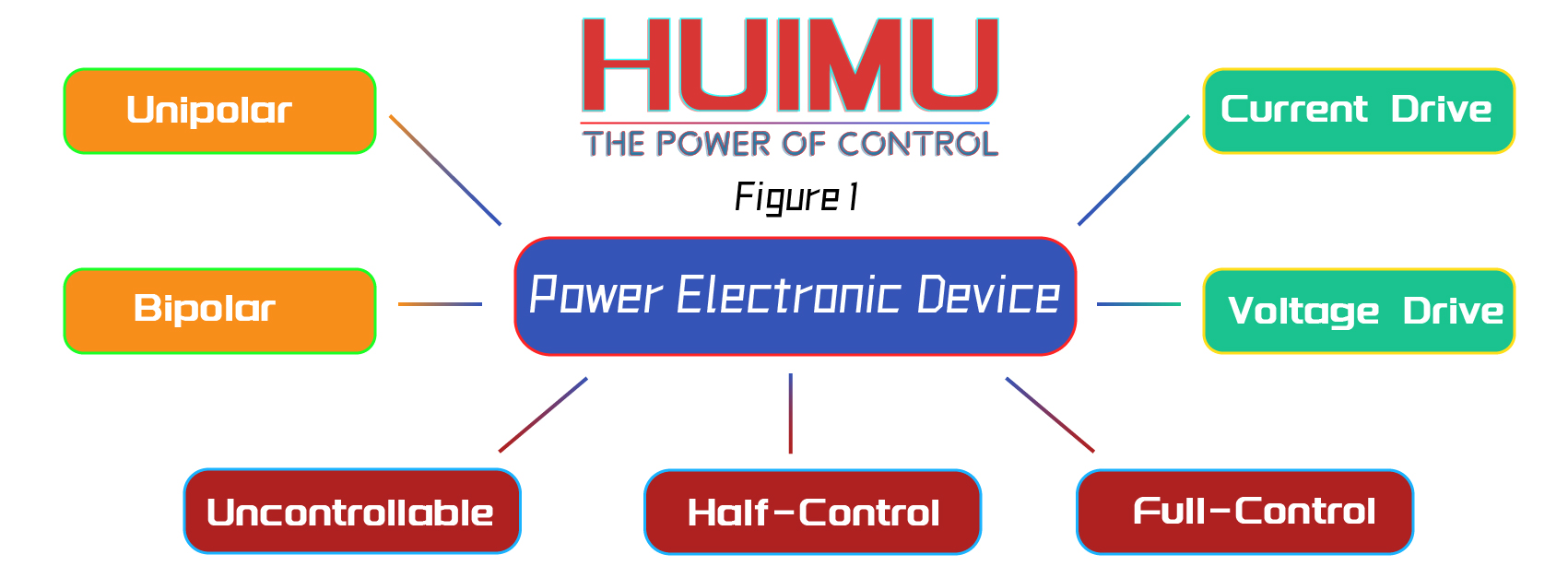§1. What is a Power Electronic Device?
In the power equipment or power system, the main circuit is used to realize the change or control of electric energy, and the Power Electronic Device (PED) is the core of the main circuit. Earlier, power electronic devices included power vacuum devices (such as mercury arc rectifiers, thyratron) and power semiconductor devices (such as power diodes, thyristors). Due to the obvious advantages of power semiconductor devices in cost and performance, they have gradually replaced the position of power vacuum devices, thus so-called power electronic devices nowadays usually refer to power semiconductor devices with silicon as the main material.
Compared with information semiconductor devices (or Information Electronic Devices, IED) that also use silicon as the main material, power electronic devices have the following characteristics:
● Power electronic devices have a large power processing capacity, but due to the large power loss, they need to be equipped with a radiator for cooling.
● Power electronic devices often require information electronic devices to provide control signals.
● Power electronic devices generally work in the switching state, not in the amplifying state, in order to reduce their power consumption.
Due to the characteristics of semiconductors, power electronic devices will inevitably produce certain power losses during operation. These power losses will not only reduce the conversion efficiency of electrical energy, but also cause permanent damage to the power electronic devices due to overheating. The main losses of power electronic devices can be divided into on-state loss, off-state loss, and switching loss. The on-state loss is the loss caused by the on-state voltage drop, and if the switching frequency of the power electronic device is not high, the on-state loss will account for a high proportion of the total loss. The off-state loss is the loss caused by the off-state leakage current, and the off-state loss usually accounts for a very small proportion of the total loss and is often ignored. The switching loss refers to the loss generated during the switching process of power electronic devices, and the switching loss is greatly affected by the switching frequency -- the higher the switching frequency, the greater the proportion of the switching loss in the total loss.

Because of the differences in the materials and structures used, the performance of different types of power electronic devices may be completely different. Therefore, before choosing power electronic devices, you must first understand their categories and characteristics to give full play to their advantages.
According to the degree of control, power electronic devices can be divided into uncontrollable type, half-controlled type, and fully-controlled type.
According to the drive circuit signal, power electronic devices can be divided into current drive type, and voltage drive type. The working state of the current-driven devices is controlled by the input current, such as thyristor, GTO, GTR, and etc. The working state of the voltage-driven devices is controlled by the electric field effect generated by the input voltage, such as MOSFET, JFET, IGBT, and etc.
According to the carrier involved in the conduction process, power electronic devices can be divided into unipolar type, and bipolar type. When unipolar type devices work, only one type of carrier (free electron or hole) participates in the conduction process, such as MOSFET, JFET, SIT, and etc. When bipolar type devices work, free electrons and holes are involved together in the conduction process, such as thyristor, GTO, GTR, IGBT, SITH, TRIAC, RCT, LTT, and etc.
Most of the voltage-driven devices are unipolar type, and most of the current-driven devices are bipolar type. Voltage-driven devices usually have the characteristics of high input impedance, low driving power, simple driving circuit, and high operating frequency. Current-driven devices usually have a conductance modulation effect, so the on-state voltage drop and the conduction loss is small, but the operating frequency is low, the required driving power is large, and the driving circuit is more complicated.
